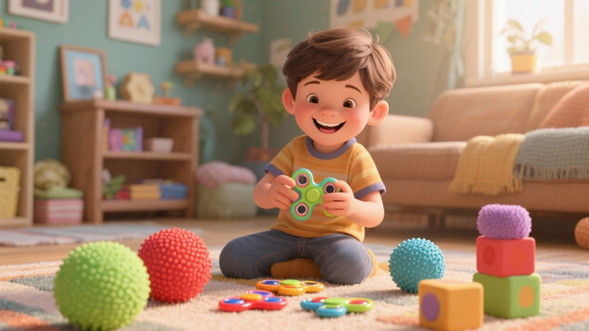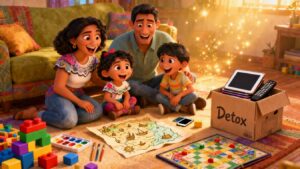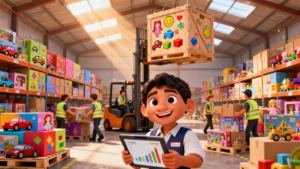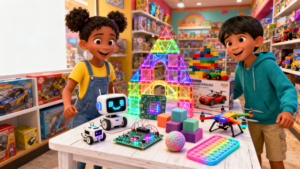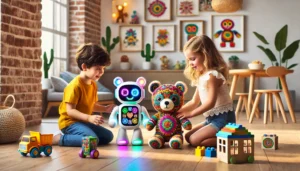How to Choose and Why They Work
Hello, millennial moms and dads! Do you remember those days when a simple toy could keep us entertained for hours, no screens or complications needed? Well, today we’re going to talk about something close to our hearts: sensory toys for children with ADHD (Attention Deficit Hyperactivity Disorder) and ASD (Autism Spectrum Disorder). These aren’t just “children’s toys”—they’re magical tools that help channel energy, calm anxiety, and promote focus, all wrapped in a bit of nostalgia that makes us smile. Just imagine passing that sense of calm on to your kids, as if giving them a piece of our own childhood. Let’s break it down in an easy, light-hearted way, so you can read it with your coffee in hand.
Why Do These Toys Work? A Little Sensory Magic
Think back to your childhood: a soft stuffed animal or a ball that bounced just the way you liked? Sensory toys do something similar, but with superpowers. For ADHD, they help “release” that restless energy, improving concentration and reducing impulsivity. For ASD, they stimulate the senses in a controlled way, encouraging communication and emotional regulation. What’s the secret? Textures, gentle sounds, and repetitive movements that activate the brain without overwhelming it. Studies (like those from the American Academy of Paediatrics) confirm it: these toys don’t cure, but they do make daily life easier, making play both therapeutic and fun. It’s like reliving those peaceful moments with an old favourite toy!
Key Tip: Look for certifications (BPA-free, washable) and try them with your child—what one loves, another might not. And yes, prioritize “sustainable toys” so they last for generations, just like ours did.
How to Choose the Perfect Toy: Practical and Nostalgic Tips
Choosing isn’t just about going to the nearest “kids’ toy sale”; it’s about thinking about what your little one needs, just like when we used to choose between a Tamagotchi or a yo-yo. Here’s a simple guide:
- Calming Textures: opt for stress balls, weighted blankets, or soft blocks. They work for ADHD by giving something to squeeze during tasks, and for ASD by providing predictable tactile sensations. Example: a bubble pop ball – just like those bubble gums that popped in the ’90s! Remember those?
- Repetitive Movements: Fidget spinners, infinity cubes, or teething rings. They help focus in ADHD and regulate in ASD. Do you remember our childhood fidgets, like marbles or spinning tops? These are the modern, safer versions.
- Soft Sounds and Lights: White noise headphones or toys with ocean sounds. Perfect for noisy environments, calming sensory overload. Think of those portable radios that used to mesmerize us as kids.
Key Tip: Look for certifications (BPA-free, washable) and try them out with your child—what one loves, another might not. And yes, prioritize “sustainable toys” so they last for generations, just like ours did.
Where to Buy: Affordable and Wholesale Options
Now, let’s get practical: where can you buy affordable toys without sacrificing quality? As a toy supplier in Mexico, I recommend starting with online or physical stores specialized in “kids’ toy sales.” For tight budgets, search for “cheap toy sales” on platforms like Mercado Libre or Amazon Mexico—there are sensory packs starting at $200 MXN.
If you like to buy in bulk, “toy wholesale” is your friend: sites like www.niutoys.com offer “wholesale toy sales” with volume discounts. Prefer something local? In the CDMX Toy Market, you’ll find toys at accessible prices. And for “where to buy cheap toys,” check out fairs like Children’s Day or Buen Fin—you’ll find bargains on “kids’ toy sales” that seem straight from our childhood!
Why It’s Worth It: A Personal Story
I remember when my nephew with ADHD discovered a fidget cube: he went from bouncing off the walls to focusing on his schoolwork. It was like giving him a pocket superhero. For ASD, a sensory blanket has been the “constant hug” that calms meltdowns. These toys don’t just work; they create memories, like those we treasure from our old toys. Invest in them—they’re not too expensive, durable, and, who knows, maybe they’ll become a nostalgic legacy for the next generation… (We talked about nostalgia in our previous blog—highly recommended!).
Ready to try it? Start with an affordable toy and see how playtime changes. If you want more tips or “wholesale toy sales,” contact us!
Please share your stories in the comments. What was your favourite sensory toy from childhood?

